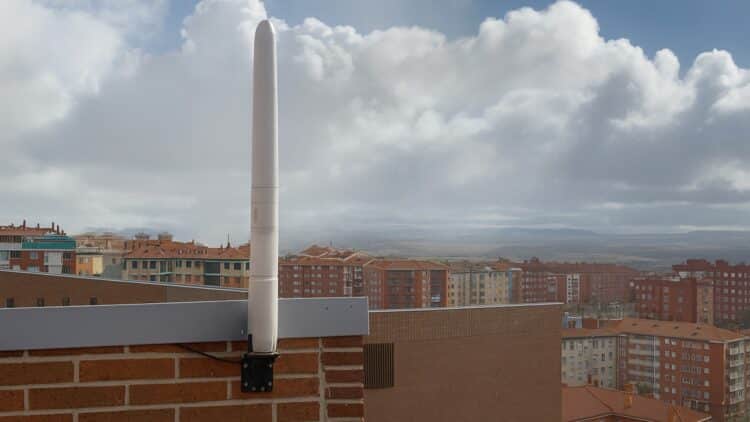Are you tired of that hefty electricity bill? Anyone would say that solar energy is the only green source of energy for homes. But what about wind? Although traditional turbines are noisy, too large, and dangerous for birds, there is an innovative alternative. A company in Spain, Vortex Bladeless, has created an alternative: a cylinder that does not rotate with blades but simply wobbles, harnessing the power of the wind in a totally innovative way.
Vortex technology is the ideal complement. While solar panels obviously work during the day, the wind tends to be stronger at night. They do not compete, but complement each other so that you always have a little sustainable energy. It produces 30% less energy than a traditional turbine, but its value lies in its application. It allows energy to be harnessed in places where it was previously impossible, such as terraces, building roofs, and other protected areas.
How does this magical “Skybrator” work?
The funny thing about this turbine is that it is based on a physical principle that engineers always try to stop in traditional turbines. Remember the famous collapse of the Tacoma Narrows Bridge? The wind caused the structure to enter into a catastrophic rhythmic dance. The vortex turbine does exactly this but in a controlled manner.
When the wind hits the cylindrical mast, it creates swirls or vortices of air around it, like the wake of a boat. The mast resonates (the famous “wobble”), and the wind speed causes these vortices to match the natural oscillation frequency of the mast.
And this back-and-forth motion is converted into electricity thanks to a system of magnets and coils located at the base. It thus acts as a very simple alternator, without the need for a rotating shaft. It is constructed of carbon fiber or fiberglass, with specialized electronics at the base.
Why it’s perfect for your home
Anyone who has been near a traditional turbine will know that they are unpleasantly noisy. This is not the case with the innovative Cortex. With no gears or blades, it operates below the threshold of human hearing. It does not create any noise pollution. It also poses zero risk of impact to bats as it has no moving blades.
The absence of moving parts also means greater durability and less maintenance; as it does not move, it suffers less wear and tear, less pressure, and requires no maintenance or lubricants, which translates into much lower operating costs. Unlike a traditional windmill, it is a thin, vertical column that does not stand out as much in the landscape or cause visual disturbance.
But when will we be able to enjoy it? We still have some time to wait; the company is still in the pilot and commercial testing phase. Unfortunately, it is not yet available for sale to the general public.
While you wait for it to go on sale, we advise you to check your local zoning laws and homeowners’ association rules. You will probably need a minimum height and sufficient clearance for oscillation. You will also need a certified electrician to connect the turbine to your home’s electrical panel or to the public grid if you want to sell excess energy.
Bladeless energy
Although the company has not yet decided on a final price, the promise that the cost of energy generated will be competitive in the long term seems sufficient guarantee to us. The prototype shown guarantees very low maintenance compared to traditional windmills. The idea of placing a turbine that does not cause any disturbance in a secluded corner of your land is also very appealing.
These turbines are not going to massively replace solar panels or traditional wind turbines, but they are a highly desirable alternative for those who want to enjoy wind energy without harming wildlife (including neighboring humans who have to put up with noise pollution). Plus, if you live in a windy area, you can be sure you’ll always have a little bit of energy. For now, we can only wait for the pilot testing phase to end and for it to go on sale.

